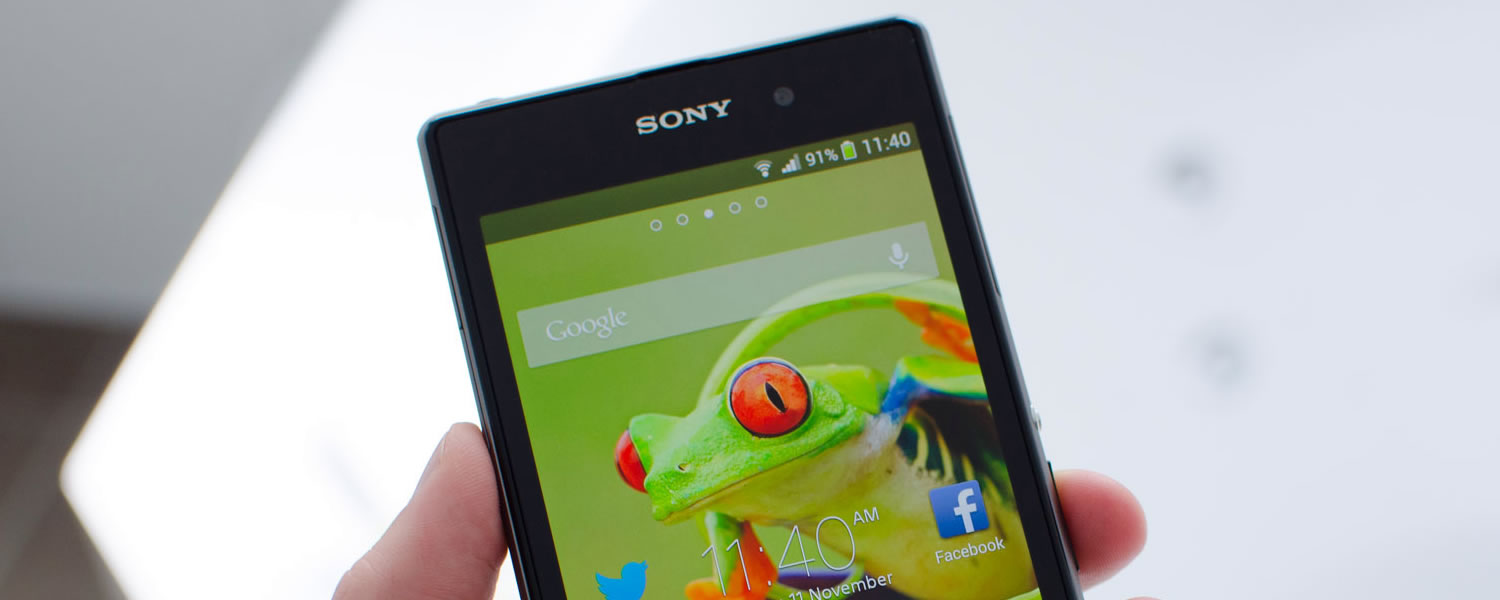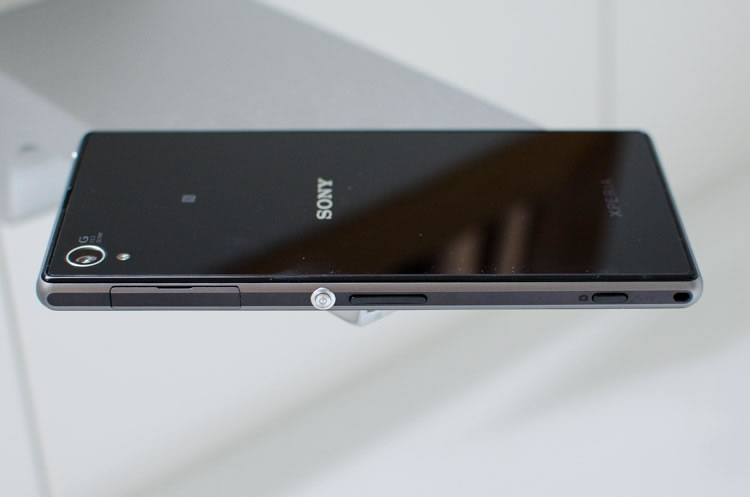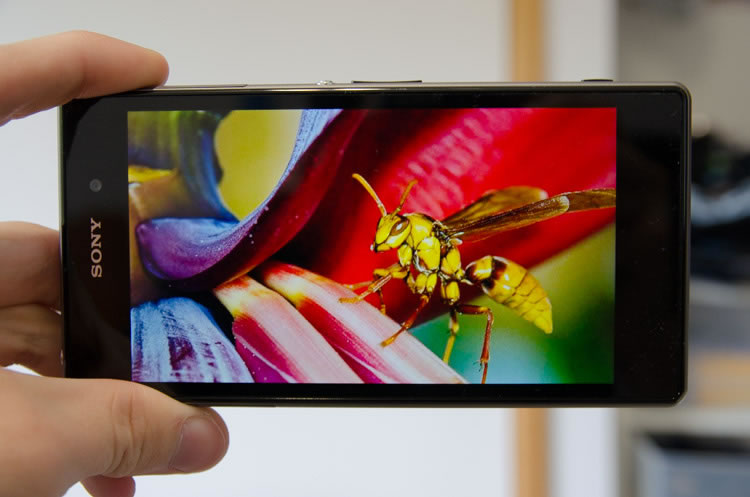Sony already tried to capture the minds of consumers earlier this year with a flagship Android device. The Xperia Z was a decent enough device when it launched, but when the competition hit hard a few months later, the Z fell a little behind. A slick design and waterproofing were some of the handset's standout features, but it notably fell behind in the chipset and display departments.
Sony Xperia Z1 - $610 (unlocked)
- 5.0", 1920 x 1080 eIPS LCD display (441 ppi)
- Qualcomm Snapdragon 800 SoC
- 2.3 GHz quad-core CPU, Adreno 330 GPU, 2GB RAM
- 16 GB internal storage, microSD card slot
- 20.7 MP camera, 1/2.3" sensor, f/2.0 lens, 1080p video
- IP58 water resistance
- 3,000 mAh, 11.4 Wh battery
- LTE, Wi-Fi a/b/g/n/ac, Bluetooth 4.0, NFC
- Android 4.2.2 'Jelly Bean'
- 170 grams, 8.5mm thick
Enter the Xperia Z1. New Snapdragon 800 SoC. New 20.7-megapixel Exmor RS camera. New aluminium body. In many respects, this is what Sony was aiming for with the original Xperia Z: a solid set of features to lure any smartphone buyer. It may be out a little later than your Galaxy S4 or HTC One, but there's no doubting that the Z1 is a high-end handset to take Sony into 2014.
The Android market is crowded, though, and Sony has found the North American market particularly challenging. Will a 20-megapixel camera provide Sony with enough of a talking point? Have they addressed all the issues with the Xperia Z1?
Design
The Xperia Z1 is more of a slab than any other phone on the market. Featuring a primarily rectangular, untapered design, the Z1 is both 8.5mm thick and 170 grams heavy, which makes it a little bit heavier than the average handset. However the density is due to an improvement in the construction, switching from the polycarbonate (plastic) frame of the Xperia Z to an aluminium frame.
Other than the aluminium frame, which runs around the edges of the Z1, the device features two glass panes; one on the front, and one on the back. Combined with the aluminium used in the construction, the glass makes the device feel like an expensive piece of hardware, but it does have its downsides. Firstly, glass is a huge fingerprint magnet, and even though it's oleophobically coated you'll find yourself cleaning both panels frequently.
Secondly, and perhaps more importantly, it increases the chances of damage through cracking. We've all seen iPhones with a cracked glass back, and I have my fears that if you drop the Xperia Z1 in the wrong way, you'll find yourself with an expensive repair bill. Luckily it's proven Gorilla Glass, so it's stronger than your regular silica and extremely scratch resistant, but it's not indestructible. However, I was glad to see considerably less diagonal flex and virtually no horizontal or vertical flex in the Z1 compared to the Z Ultra, which naturally leads to less chances of snapping the device when sitting on it accidentally.
The front panel of the Z1 is slick, and similar to what we all enjoyed in the Xperia Z. The 5-inch display sits right in the middle, with 16mm of bezel above and below. As the Z1 has onscreen buttons, the bottom part of this bezel isn't used for anything, while the top features a front-facing camera, sensor array, speaker and notification light.
Unfortunately the large amount of bezel makes the Z1 larger than it needs to be, which inhibits its pocketability and usability. It's taller than other flagships with similar-sized displays, such as the LG G2 and Samsung Galaxy S4, highlighted by how the Z1's panel occupies just 64% of the phone's footprint, compared to 76% and 72% for the two aforementioned devices respectively. I would have liked to see Sony reduce the height of the phone, ridding the front panel of a significant amount of unused space to make the display seem larger.
Around the edges of the Z1 we see the circular power button and small volume rocker on the left hand side, below a covered SIM card slot. On the right is a microSD card slot and USB port, both covered, as well as a dock connector, while the top sees the 3.5mm headphone jack and the bottom has the device's main speaker. The covered USB port is a little inconvenient when you have to charge the phone every day, but it does allow the device to be water proofed.
As far as the dock connector is concerned, I'm not quite sure why Sony would include it in this form. It looks odd, feels strange when you're holding the phone, and detracts from the otherwise well-crafted design. The Xperia Z featured a smaller, albeit non-magnetic dock connector which was flush with the edges; the Z1's connector is not flush when it really should be. Some people who briefly used my Z1 review unit thought the connector looked like a "missing volume button", which basically says it all.
But let's not forget a key addition to the Xperia Z1's body: the dedicated, two-stage camera button. This button is a critical inclusion for two reasons: it makes using the 20-megapixel camera that much easier; and it facilitates underwater photography. As I've mentioned a few times in this review, the Z1 is IP55 and IP57 water resistant, meaning it can withstand 1.5m of fresh water for up to 30m. The original Xperia Z is also waterproof, but as you can't use the touchscreen underwater, it's pretty useless once you submerge it. However, with the dedicated camera button on the Z1, the device actually can be used for photos under the water.
The ergonomics of the Xperia Z1 are good, but not fantastic. The edges of the handset are curved to an extent, which stops the rectangular design from digging in to your palms, but it's not as good a fit as other handsets I've used. Rather than going all out on ergonomics, Sony has opted for a slick, visually fantastic design with a strong build, which in many respects is very appealing.
Display
Once again, Sony disappoints with the inclusion of a mediocre LCD panel in the Xperia Z1. Sure, I'm talking about a (supposedly) high-end 5.0-inch panel with a resolution of 1920 x 1080, but the choice of eIPS technology holds the display back from being on the same quality level as the HTC One, iPhone 5s or LG G2.
For those who have an Xperia Z, the Z1's display will seem very familiar. This means that the panel has some good upsides, but also some significant downsides such as color quality and viewing angles, which I'll explore later. For now though, let's focus on the positives, starting with the pixel density and crispness.
2.07 million pixels in the space of 68.9cm² equates to a density of 441 pixels per inch (ppi), which helps give the Xperia Z1's display the clarity you'd expect from a high-end display. Any panel of this quality looks as good as paper when displaying text: there are no jagged edges, no visible pixels, and the curved edges of each letter looks as sharp as any book you've read. The high pixel density can also be seen when viewing high-resolution photos and videos, with the display exhibiting clarity as good as other 5-inch 1080p panels.
The panel Sony has gone with also has its advantages for watching videos, as the resolution allows you to watch 1080p content natively. Five inches is a reasonable amount of screen real estate for media playback and gaming, with the large bezels helping slightly when using the handset in a landscape position. With that said, the majority of the time the usable screen space is reduced to 4.7" thanks to the onscreen buttons, although in some applications (the video player is one example) the buttons do disappear.
As with my previous experiences using this eIPS display, the panel is both bright and easy to see when outdoors. Auto-brightness is reasonably effective ramping up the display's backlight where necessary, and at full brightness you can still read the display in direct sunlight. It appears as though the display module has a few more layers than competing smartphone LCD panels, which means the display itself is set slightly back from the glass protecting it.
The screen's extra layers don't appear to affect readability but do have a negative effect on viewing angles. Out of any high-end phone currently available that you can name, the Xperia Z1 will have the worst viewing angles by far. Look at the display off-normal and you'll see significant washing out and some distortion of colors, even at small angles. This isn't a huge issue when you're using the device in your hands, but if you try and read the display when it's on a desk in front of you, you'll likely fall victim to its poor viewing angles.
I wasn't overly impressed by the Xperia Z1's color quality and accuracy. The eIPS TFT LCD panel isn't bad to look at, however I found when comparing it to the displays used on the HTC One, LG G2 and iPhone 5c, again Sony falls behind its competitors. In contrast and saturation the Z1's panel just lacks that wow-factor that you experience with other displays, which makes it seem rather lackluster; especially so when you're directly comparing it to the aforementioned devices.
Sony does have a clever tool up its sleeve that often improves the quality of the Z1's display, and that's the "X-Reality for Mobile" engine (formerly known as the Mobile Bravia Engine). Implemented in the handset's software, the X-Reality engine enhances the quality of images and videos when you're in the stock applications. It really does make images and videos look better through boosting saturation and applying a few sharpness enhancements, although I wish it was implemented in firmware so it was activated permanently across the entire operating system and all third-party apps.
The Xperia Z1's eIPS display isn't bad per se, but it's far from the top of the smartphone chain despite its size and resolution. Across the board Sony has made many enhancements to the Xperia Z's hardware in releasing the Z1, which leaves me feeling disappointed that the display - a known downside to the Xperia Z - wasn't addressed. Instead we're left with an essentially identical display with the same issues as last time, which isn't great for a flagship device that's strong in many other areas.












